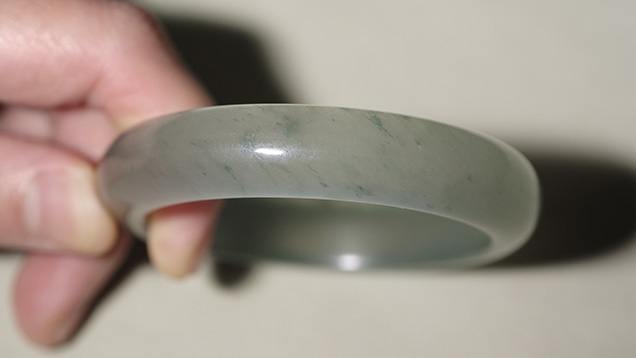Polymer-Impregnated Aventurine Quartz, a New Imitation of “Ice Jade”

The market for jadeite jade is sizable, especially in the Far East. The variety and quantity of jadeite imitations is vast, a source of concern for the trade and consumers alike. A client recently submitted a polymer-impregnated aventurine quartz bangle to the Lai Tai-An Gem Lab in Taipei under the mistaken impression that it was jadeite jade.
The 212.90 ct bangle measured approximately 68 × 13 mm and exhibited a light green color, with a pleasant semi-transparent appearance that resembled a type of jadeite often referred to as “ice jade” (figure 1). Standard gemological testing gave a spot RI of 1.54 and an SG of approximately 2.66, and we observed inclusions of fuchsite mica, properties all consistent with aventurine quartz. More advanced methods, namely FTIR and Raman spectroscopy, were also applied. The FTIR spectrum (figure 2) revealed the polymer treatment of the piece. The long-wave UV light reaction was a very strong blue (figure 3), which appeared to confirm the treatment. Natural aventurine normally has an inert to weak reaction to long-wave UV light; by contrast, polymers generally show a moderate to very strong blue reaction. The acid-damaged surface structure observed with a microscope also corresponded with the treatment procedures used on jadeite.


In our experience, polymer-impregnated aventurine quartz is rarely encountered in the jewelry market. Still, its resemblance to “ice jade” shows that buyers should be fully aware of the potential risk of misidentifying such material.



